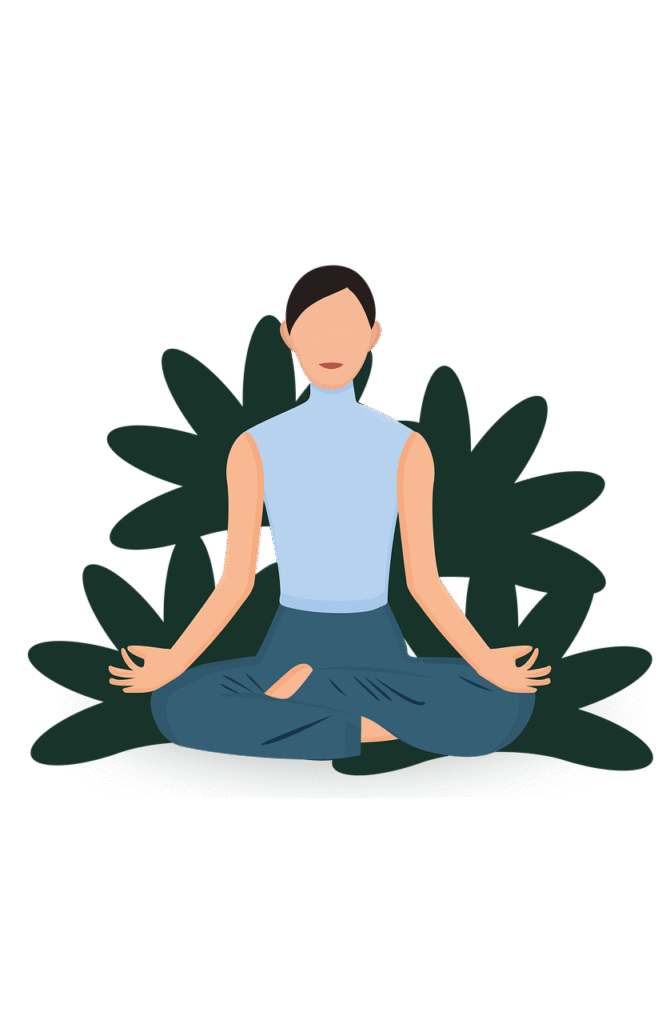Why Breathwork Matters More Than Ever
If you’re someone who’s constantly juggling stress, poor sleep, anxiety, or low energy, you’re not alone. In today’s fast-paced world, it’s easy to feel overwhelmed. We search for solutions like yoga, meditation, supplements, yet often overlook one of the most powerful tools we already have: our breath.
Breathwork has exploded in popularity recently, and for good reason. It’s accessible, free, and backed by science. Whether you’re a busy professional, a wellness seeker, or just looking for natural ways to reset your body and mind, breathwork offers proven benefits that can help you feel more grounded and in control.
In this post, we’ll explore the science behind breathwork, its different types, key benefits, and how to get started. We’ll also look at who it’s ideal for, answer common questions, and provide a helpful comparison of popular techniques to help you find what fits best.
What Is Breathwork?
Breathwork refers to a range of breathing techniques used to improve mental, physical, and emotional well-being. Unlike regular breathing, which is automatic, breathwork is intentional. It involves controlled breathing patterns that can activate or calm different systems in the body.
The Science Behind It
Breathwork works by influencing the autonomic nervous system – the part of your body that controls automatic functions like heart rate, digestion, and stress responses. Through specific breathing patterns, you can shift from “fight-or-flight” (sympathetic mode) to “rest-and-digest” (parasympathetic mode).
Studies have shown that breathwork can:
- Lower cortisol (stress hormone) levels
- Improve heart rate variability (HRV)
- Enhance oxygen and carbon dioxide exchange
- Reduce symptoms of anxiety and depression
- Improve focus and emotional regulation

Key Types of Breathwork (And What They Offer)
1. Box Breathing
What it is: A simple technique involving inhaling, holding, exhaling, and holding again, each for four seconds. Often used by Navy SEALs to stay calm in high-stress situations.
How to do it:
- Sit upright in a comfortable position.
- Inhale through your nose for 4 seconds.
- Hold your breath for 4 seconds.
- Exhale slowly through your mouth for 4 seconds.
- Hold again for 4 seconds.
- Repeat for 4–6 cycles, or around 2–4 minutes.
- Key Features: Easy to learn, low-intensity, ideal for quick calming.
- Pros: Great for beginners; lowers stress fast.
- Cons: Less effective for deep emotional release.
- Ideal for: Busy professionals, students, and anyone new to breathwork.
2. Diaphragmatic Breathing (Belly Breathing)
What it is: A gentle method that emphasizes breathing deeply into the diaphragm rather than shallowly into the chest.
How to do it:
- Lie on your back or sit comfortably with one hand on your chest and one on your belly.
- Inhale deeply through your nose, allowing your belly (not chest) to rise.
- Exhale slowly through your nose or mouth, letting your belly fall.
- Try to keep your chest relatively still while your abdomen does the work.
- Continue for 5–10 minutes.
- Key Features: Trains proper breathing mechanics, improves lung function.
- Pros: Can improve digestion, sleep, and calmness.
- Cons: Requires regular practice to see benefits.
- Ideal for: People with anxiety, sleep issues, or respiratory challenges.

3. Wim Hof Method
What it is: A powerful breathing technique combined with cold exposure and meditation. Involves cycles of deep breathing followed by breath-holding.
How to do it:
- Sit or lie down in a safe, comfortable place.
- Take 30–40 deep breaths: inhale through the nose or mouth, exhale through the mouth. The breaths should be powerful but not forced.
- After the final exhale, hold your breath as long as you comfortably can.
- When you feel the urge to breathe, take a deep inhale and hold it for 15 seconds.
- Repeat for 3–4 rounds.
Note: This practice should always be done sitting or lying down. Never do it while driving or in water.
- Key Features: Boosts adrenaline and energy, strengthens immunity.
- Pros: Scientifically backed; increases endurance and resilience.
- Cons: Can feel intense; not suitable for everyone.
- Ideal for: Athletes, biohackers, and adventurous wellness seekers.
4. 4-7-8 Breathing
What it is: A relaxing breathing pattern involving a 4-second inhale, 7-second hold, and 8-second exhale.
How to do it:
- Sit or lie down comfortably.
- Inhale quietly through your nose for 4 seconds.
- Hold your breath for 7 seconds.
- Exhale audibly through your mouth for 8 seconds.
- Repeat the cycle 4–8 times.
Tip: If the counts feel too long at first, cut them in half and build up slowly.
- Key Features: Activates the parasympathetic nervous system.
- Pros: Promotes deep relaxation and sleep.
- Cons: Can feel awkward at first.
- Ideal for: People with insomnia, high stress, or racing thoughts.
Breathwork Comparison Chart
| Technique | Best For | Intensity | Key Benefit | Guided Required |
|---|---|---|---|---|
| Box Breathing | Quick stress relief | Low | Reduces anxiety fast | No |
| Diaphragmatic | Sleep, digestion, calm | Low | Regulates nervous system | No |
| Wim Hof | Energy, immunity, resilience | High | Boosts focus and endurance | Optional |
| 4-7-8 Breathing | Sleep, relaxation | Moderate | Activates calm response | No |
How to Start a Breathwork Practice
Step 1: Choose Your Goal
Are you looking to reduce anxiety? Improve energy? Your goal will help you pick the right method.
Step 2: Start Small
Begin with 5 minutes a day. You don’t need to dive into intense practices. Try box breathing or 4-7-8 for a gentle introduction.
Step 3: Create a Routine
Practice at the same time each day – morning for energy, night for relaxation. Make it a ritual, not a chore.
Step 4: Use Guidance If Needed
Apps like Insight Timer, Headspace, and Breathwrk offer guided sessions. YouTube also has plenty of free videos to follow along.
Step 5: Listen to Your Body
Some techniques may bring up emotions or discomfort. If you feel lightheaded or overwhelmed, pause and return to normal breathing.

FAQs: Common Questions About Breathwork
1. Is breathwork safe for everyone?
Most breathwork techniques are safe, but intense methods like Wim Hof should be avoided by those with heart conditions, epilepsy, or pregnancy unless under supervision. Always consult your doctor if unsure.
2. How quickly will I see results?
Some benefits, like stress reduction, can be felt immediately. Deeper emotional or physical improvements may take a few weeks of consistent practice.
3. Can breathwork replace therapy or medication?
Breathwork is a powerful complement to mental health tools, but it’s not a replacement for professional care. It works best when integrated with therapy, mindfulness, and lifestyle habits.
Final thoughts
Breathwork is more than just a wellness trend – it’s a science-backed way to transform how you feel, think, and live. From simple calming techniques to powerful emotional releases, there’s a breathwork style for every need and every lifestyle.
To recap:
- Breathwork taps into your nervous system and helps regulate stress, emotions, and energy.
- Techniques like box breathing, 4-7-8, and Wim Hof offer specific benefits depending on your goals.
- Starting small and practicing consistently is key.
- Use apps or professionals for guidance, especially with more intense practices.
Whether you’re looking for a quick stress reset or a deeper personal journey, breathwork gives you a tool you can use anytime, anywhere – no equipment, no cost, just you and your breath.







